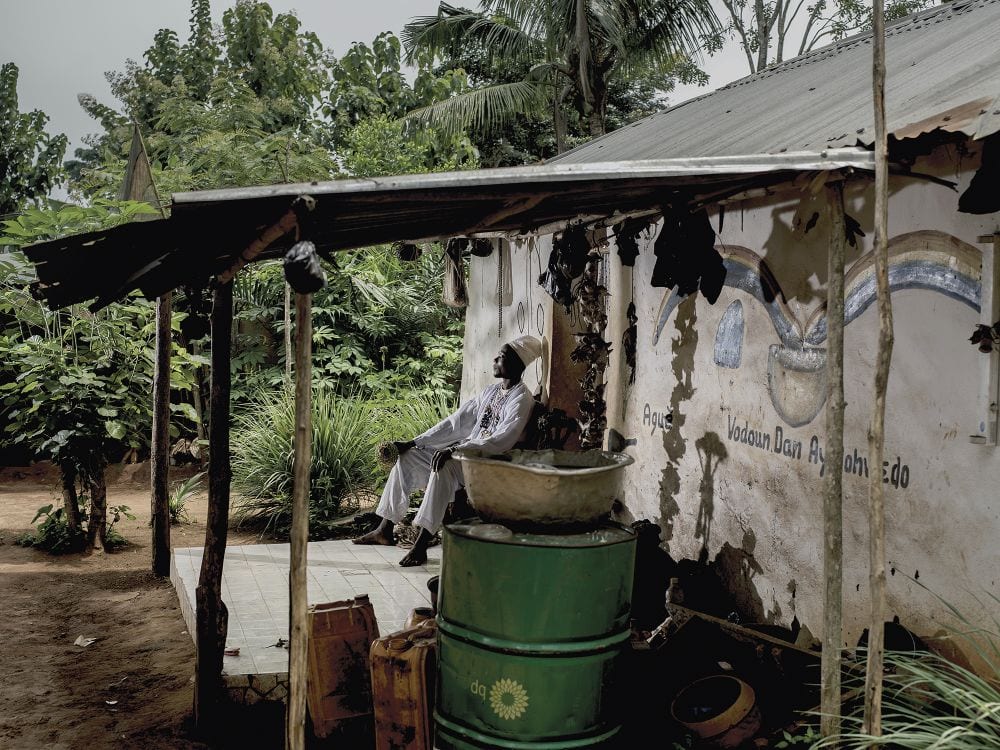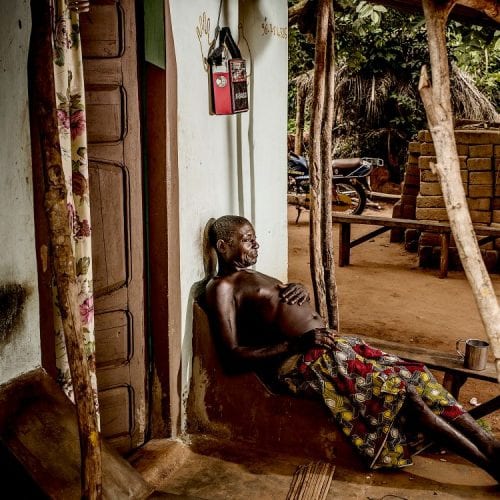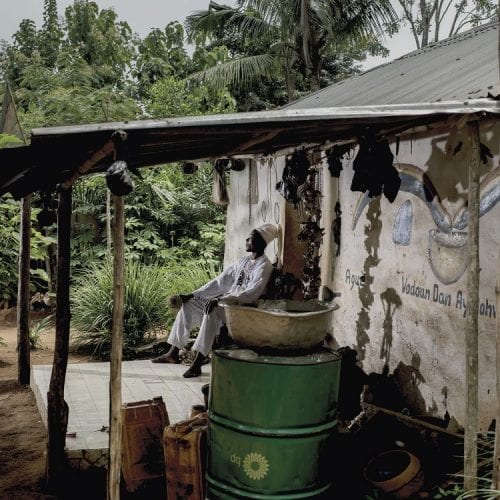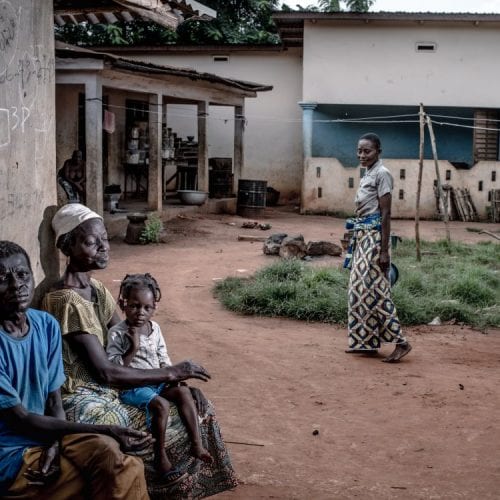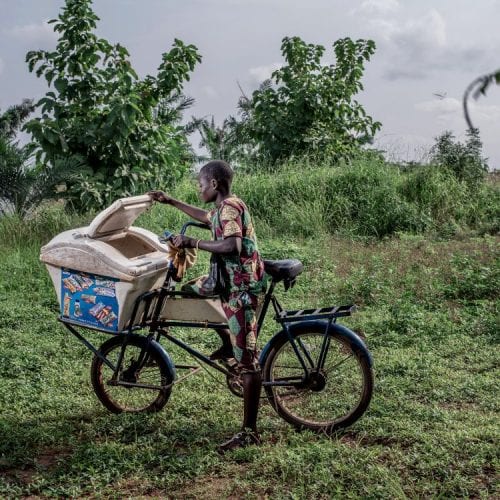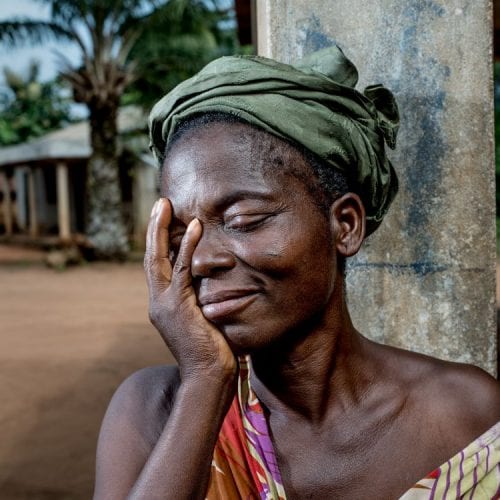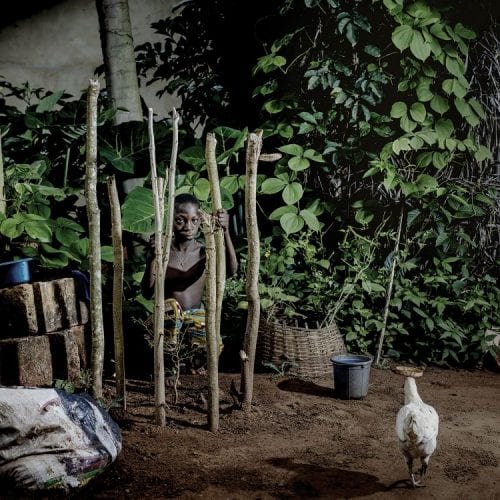“During a mission with an NGO in Ayou, a small rural village in Benin, I realized my total inadequacy. It was at this moment that I began to doubt the world as I saw it—the dirt roads which wound, serpentine, through the forest and surrounded the little hamlets. In these spaces, in small courtyards, the indispensable tools of Life were carefully dispersed so that they could be found as needed. Invisible from the outside, there were mysterious little altar-houses, often covered with frescoes. Within, the memories of bygone rituals had left their trace: dried tea leaves, broken ceramics, woven baskets, ropes, wax, traces of fires, pebbles, bones, scraps.
Sometimes, I was accompanied by a voice—one that rolled her shining eyes and said into my ear, “Voodoo, Voodoo.” By revealing to me the secret, these spaces became for me the link between two worlds: the Earth and the Cosmos.
The week I had to spend in the village would not teach me anything. I simply went to meet people, my eyes tinted with these mysteries. At each step, I tried not to commit a misstep that would ruffle the force, bringing the wrath of the deities on the community.
My humanistic portraits are loaded with magic, intensity and doubt. Here, I have no answer to the certainties of my doubts any more than I have at home. Through this project, I did not try to show or explain a cult, but instead to follow a path through my encounters, perhaps crossing (unknowingly) the lines of force between the invisible and terrestrial worlds. In the end, I found that I was expressing how both my subjects—and myself—were balanced in a delicate space in between…”
—David Wagnières (www.davidwagnieres.ch)
* This feature was taken from and published by Lensculture as one of the winners for their 2017 Portrait Awards
